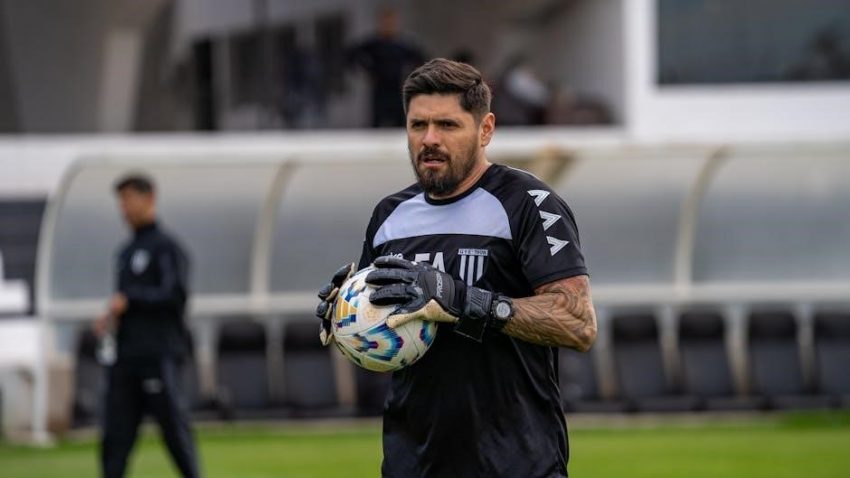Discover how to find your perfect glove size with this comprehensive guide. Learn proper measuring techniques‚ understand size charts‚ and avoid common mistakes for optimal fit and performance in any activity.
Importance of Proper Fit
A proper fit is essential for both functionality and comfort. Gloves that are too tight can restrict movement‚ causing discomfort and potentially hindering performance. On the other hand‚ gloves that are too loose may lack the necessary grip and control‚ especially in sports or activities requiring precision.
For athletes‚ a well-fitting glove ensures optimal protection and dexterity. In sports like baseball or lacrosse‚ improper sizing can affect how well you catch or throw. Similarly‚ in everyday use‚ such as winter gloves‚ a poor fit can lead to cold hands or limited mobility.
Understanding the importance of proper fit helps you make informed decisions when selecting gloves. Whether for sports‚ work‚ or casual wear‚ the right size ensures maximum comfort‚ protection‚ and performance. Avoiding sizing mistakes is crucial for achieving your goals‚ whether on the field or in daily life.
Brief Overview of Glove Sizing
Glove sizing is determined by measuring the circumference of your hand and the length of your fingers. Proper sizing ensures comfort‚ dexterity‚ and optimal performance for specific activities.
Most gloves are sized based on hand circumference‚ measured just below the knuckles‚ and finger length. Size charts vary by manufacturer and activity type‚ with options for youth and adult sizes.

Standard sizes range from small to extra-large‚ while sport-specific gloves may use numerical sizing. For example‚ baseball gloves are sized by length in inches‚ while boxing gloves are sized by weight in ounces.
Understanding glove sizing helps you choose the right fit for your needs. Whether for sports‚ work‚ or casual use‚ a well-sized glove ensures better grip‚ protection‚ and comfort.

How to Measure Your Hand
Use a tape measure to wrap tightly around your palm at the widest point‚ just below the knuckles‚ with your thumb excluded. This gives your hand circumference for sizing.
Using a Tape Measure
To accurately measure your hand for gloves‚ wrap a tape measure around the widest part of your palm‚ just below the knuckles. Ensure the tape is snug but not overly tight‚ and keep your thumb outside the measurement. This will give you the hand circumference‚ a key factor in determining your glove size. Use your dominant hand‚ as it is typically slightly larger than the non-dominant hand. Take note of the measurement in inches‚ as most glove size charts are based on this data. If the measurement falls between sizes‚ consider rounding up for comfort. For example‚ if your hand measures 7.5 inches‚ you may opt for a size 8 glove. Always refer to the specific size chart provided by the manufacturer‚ as sizing can vary slightly between brands and types of gloves. This method ensures a precise fit‚ whether for sports‚ work‚ or everyday use.

Measuring Without a Tape Measure
If you don’t have a tape measure‚ you can still determine your glove size with a few simple steps. Wrap a string or a flexible object like a belt tightly around the widest part of your palm‚ just below the knuckles‚ and mark where the string overlaps. Lay the string flat and measure the length using a ruler or a straight edge. This will give you your hand circumference. Alternatively‚ you can use a piece of paper to trace the outline of your hand and measure the width at the widest point. For accuracy‚ use your dominant hand‚ as it tends to be slightly larger than the non-dominant hand. If unsure‚ round up to the next size for comfort. This method is a practical solution when a tape measure isn’t available‚ ensuring you can still find the right fit for your gloves.
Understanding Glove Size Charts
Glove size charts vary by brand and activity‚ with standard sizes based on hand circumference and finger length. Youth sizes are smaller‚ while adult sizes offer more room. Always refer to the manufacturer’s chart for accurate sizing.
- Standard sizes are based on hand circumference and finger length.
- Youth sizes are smaller‚ while adult sizes offer more room.
- Always refer to the manufacturer’s chart for accurate sizing.
Standard Size Charts
Standard glove size charts are designed to provide a universal guide for selecting the right fit. These charts typically measure hand circumference and finger length to determine size. Measurements are often categorized into small‚ medium‚ large‚ and extra-large‚ with some manufacturers using numerical or alphabetical labels. For example‚ sizes may range from 6 to 12 inches for hand circumference‚ corresponding to sizes small through XXL. Charts may also include specific activity-based sizing‚ such as baseball or boxing gloves‚ which prioritize dexterity and protection. While standard charts are helpful‚ variations between brands and activities mean it’s important to consult the manufacturer’s guidelines. Always measure your hand accurately to ensure the best fit. Proper sizing ensures comfort‚ performance‚ and safety‚ whether for sports‚ work‚ or casual use. Referencing a standard size chart is the first step in finding gloves that meet your needs.
- Measure hand circumference and finger length for accurate sizing.
- Sizes often range from small to XXL‚ with specific numerical measurements.
- Consult manufacturer guidelines for activity-specific sizing.
- Proper fit ensures comfort‚ performance‚ and safety.
Youth vs. Adult Sizes

Understanding the differences between youth and adult glove sizes is crucial for ensuring proper fit and functionality. Youth sizes are designed for smaller hands‚ typically with a hand circumference of 31 inches or less‚ while adult sizes start at 32 inches and above. Youth gloves are generally lighter and more compact‚ catering to younger users’ needs for dexterity and control. Adult gloves‚ however‚ are larger and often more robust to accommodate bigger hands and more intense activities. Key factors include finger length and palm width‚ which vary significantly between age groups. Always measure both hand circumference and finger length to determine the appropriate size. Youth sizes focus on comfort and flexibility‚ while adult sizes prioritize durability and performance. Consulting manufacturer guidelines is essential‚ as some brands may offer intermediate sizes or specific fits for certain activities. Proper sizing ensures optimal comfort and effectiveness for both youth and adult users.
- Youth sizes: smaller‚ lighter designs for younger hands.
- Adult sizes: larger‚ more robust for bigger hands and intense use.
- Measure hand circumference and finger length for accurate sizing.
- Consult manufacturer guidelines for specific fit recommendations.
Variations by Activity
Glove sizes can vary significantly depending on the specific activity or sport. For instance‚ baseball gloves typically range from 11.5 to 13 inches‚ with fastpitch utility gloves slightly smaller and slowpitch gloves larger. Lacrosse gloves also have unique sizing to accommodate protective needs. Each sport requires different levels of dexterity‚ protection‚ and grip‚ influencing glove design and size. Measurement guidelines often differ by activity type‚ so it’s crucial to consult sport-specific charts. For example‚ boxing gloves range from 6 to 16 ounces‚ focusing on weight rather than hand circumference. Always consider the activity’s demands when selecting gloves‚ as improper sizing can affect performance and safety. Whether for sports‚ work‚ or casual use‚ understanding activity-specific sizing ensures the best fit and functionality. Refer to manufacturer recommendations for precise guidance tailored to your needs.
- Baseball: 11.5–13 inches
- Fastpitch: 11.5–12 inches
- Slowpitch: Up to 13 inches
- Lacrosse: Sport-specific protective sizing
- Boxing: 6–16 ounces

Factors Influencing Glove Size
Hand circumference‚ finger length‚ and activity type are key factors. Proper measurement ensures optimal fit‚ while activity-specific needs dictate design variations. Each influences size to ensure comfort‚ performance‚ and protection.
Hand Circumference
Hand circumference is a crucial factor in determining glove size. It measures the width of your palm at its widest point‚ just below the knuckles. To measure accurately‚ wrap a tape measure tightly around your dominant hand‚ excluding the thumb. This measurement helps ensure the glove fits comfortably without restricting movement. Proper sizing prevents gloves from being too tight‚ which can cause discomfort‚ or too loose‚ which may reduce grip and performance. Different activities often require specific fits‚ so understanding your hand circumference is essential for selecting the right glove. Always refer to a size chart after measuring‚ as sizes can vary between brands and activities. Accurate measurement ensures optimal comfort‚ dexterity‚ and protection‚ making it a foundational step in choosing the perfect glove.
Finger Length
Finger length plays a significant role in ensuring a comfortable and functional glove fit. While hand circumference is the primary measurement‚ finger length helps determine how the glove will fit around your fingertips. Longer fingers may require a slightly larger size to avoid tightness‚ while shorter fingers may need a tailored fit to prevent excess material. Measure finger length from the base to the tip to assess if adjustments are needed. For sports gloves‚ such as baseball or lacrosse‚ proper finger length ensures better grip and control; In contrast‚ everyday gloves focus on overall comfort without restricting movement. Always consider finger length alongside hand circumference for a balanced fit. This dual approach ensures the glove is neither too tight nor too loose‚ providing optimal comfort and performance for any activity. Accurate finger length measurement enhances the overall glove-wearing experience.
Activity Type
The type of activity you engage in significantly influences your glove size and fit. For sports like baseball or lacrosse‚ gloves are designed for specific functions‚ requiring precise measurements to ensure optimal performance. Winter gloves prioritize warmth and dexterity‚ while work gloves focus on durability and grip. Each activity demands a unique balance of fit and functionality. For example‚ fastpitch utility gloves range from 11.5 to 12 inches‚ while slowpitch gloves can be up to 13 inches. Always consult the manufacturer’s sizing chart for your specific activity‚ as variations may occur. Proper fit ensures comfort and effectiveness‚ whether you’re playing a sport‚ working‚ or braving cold weather. Understanding your activity’s demands helps you choose a glove that meets your needs. Remember‚ the right fit enhances performance and protection. Choose gloves tailored to your activity for the best results; Activity-specific sizing ensures you get a glove that works as hard as you do. This guide helps you make informed decisions for any activity.
Choosing the Right Glove Size
Choosing the right glove size ensures optimal performance and comfort. Measure your hand circumference‚ consult size charts‚ and consider activity-specific sizing for the best fit. Proper fit enhances protection and functionality.
How to Read Size Charts
Reading glove size charts effectively is key to finding your perfect fit. Most charts list sizes numerically or alphabetically‚ often corresponding to hand measurements like circumference and finger length. Start by locating your measured hand circumference‚ typically found in inches or centimeters. Match this to the chart’s size range‚ ensuring it aligns with your activity type‚ as sports gloves may vary. Pay attention to specific categories‚ such as youth or adult sizes‚ to avoid mismatches. Some charts include finger length measurements‚ which are crucial for optimal dexterity. If your size falls between two options‚ consider the activity’s demands—tighter for precision‚ slightly looser for comfort. Be aware that manufacturer sizing can differ‚ so always refer to the specific brand’s chart. By carefully aligning your measurements with the chart‚ you can ensure a glove that balances protection‚ mobility‚ and comfort‚ tailored to your needs.
Sizing for Different Sports
Glove sizing varies significantly across different sports‚ as each activity demands specific fit and functionality. For example‚ baseball gloves are sized by length‚ typically ranging from 11 to 13 inches‚ with variations for infield‚ outfield‚ and pitcher positions. Fastpitch gloves are slightly shorter‚ often between 11.5 and 12 inches. Boxing gloves‚ on the other hand‚ are sized by weight (6 to 16 oz) rather than hand measurements‚ emphasizing protection and padding. Cycling gloves prioritize finger length and palm cushioning‚ with sizes based on a combination of hand circumference and finger measurements. Soccer goalkeeping gloves focus on grip and dexterity‚ often using a numeric sizing system; Always consult sport-specific size charts‚ as manufacturers tailor their sizing to meet the unique demands of each activity. By understanding these variations‚ you can select gloves that optimize performance‚ comfort‚ and protection for your specific sport. Proper fit ensures better control‚ safety‚ and overall performance.

Common Mistakes to Avoid
Avoid sizing gloves too tight or too loose‚ as this can restrict movement or reduce grip. Also‚ don’t ignore manufacturer-specific sizing variations‚ as standards differ across brands and activities.
Sizing Too Tight or Too Loose
Sizing gloves too tight can restrict movement and cause discomfort‚ while gloves that are too loose may hinder performance. Proper fit is crucial for functionality and comfort‚ regardless of the activity. If gloves are too tight‚ they may limit finger mobility and lead to poor grip or control. On the other hand‚ gloves that are too loose can slip during use‚ reducing precision and increasing the risk of dropping items or losing grip. To avoid these issues‚ measure your hand accurately and refer to the size chart provided by the manufacturer. Pay attention to specific sizing guidelines for different activities‚ as some sports or tasks may require a snugger or looser fit. For example‚ baseball gloves need to be snug to allow quick catches‚ while winter gloves should have some room for insulation without being overly bulky. Always prioritize comfort and functionality when selecting your glove size.
Ignoring Manufacturer Differences
One common mistake when selecting gloves is ignoring the sizing variations between manufacturers. Each brand may have its own sizing standards‚ and assuming a “one-size-fits-all” approach can lead to poor fit. For instance‚ a size 7 glove from one brand might not match the dimensions of a size 7 from another. This discrepancy is especially true for specialized gloves‚ such as baseball‚ boxing‚ or winter gloves‚ where sizing can differ significantly. Always consult the specific size chart provided by the manufacturer to ensure accuracy. Additionally‚ some brands cater to specific hand shapes or activities‚ so it’s crucial to consider these factors. Ignoring these differences can result in gloves that are either too tight or too loose‚ affecting both comfort and performance. To avoid this‚ compare your measurements directly to the manufacturer’s guidelines and read reviews to understand how their sizing runs. Proper fit is essential for optimal functionality and comfort.

Choosing the right glove size ensures comfort and performance. Always measure accurately‚ consult size charts‚ and consider manufacturer differences. A perfect fit enhances functionality‚ making your gloves a reliable companion for any activity.
Proper glove sizing is crucial for comfort and functionality. Measure hand circumference just below the knuckles and compare to size charts. Finger length and activity type also influence fit. Always use a tape measure for accuracy. Be aware that sizes may vary by manufacturer‚ so refer to specific charts. Avoid common mistakes like sizing too tight or too loose‚ as this can affect performance. Youth and adult sizes differ‚ with youth sizes typically smaller. Consider the sport or activity when choosing gloves‚ as some require specific fits. Using the right techniques ensures a perfect fit‚ enhancing both comfort and performance. Proper sizing prevents issues like restricted mobility or poor grip. By following these guidelines‚ you can confidently select gloves tailored to your needs.
Final Tips for Perfect Fit
Ensure a perfect fit by prioritizing proper sizing and comfort. Always measure your hand accurately‚ using a tape measure around the palm at the widest point. Consider your activity type‚ as sports-specific gloves may require a different fit. Check manufacturer size charts‚ as sizes can vary between brands. If unsure‚ opt for a slightly larger size to avoid tightness; Try gloves on if possible‚ and wear them as you would during use. Pay attention to finger length and dexterity needs. Don’t compromise on fit—properly sized gloves enhance performance and comfort. For youth sizes‚ ensure the glove allows growth without being too loose; Remember‚ the right fit ensures protection‚ grip‚ and mobility‚ making it essential for optimal performance in any activity.

